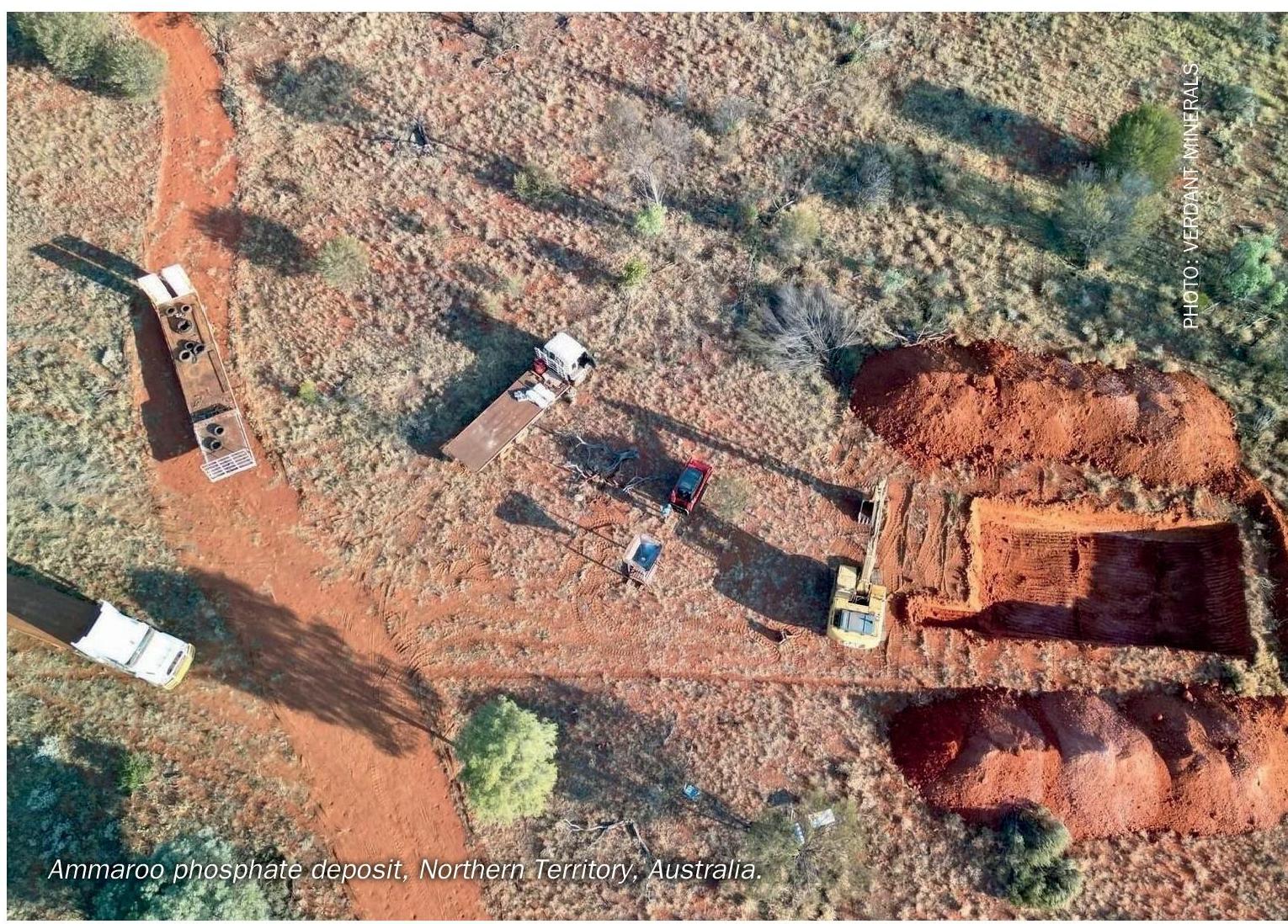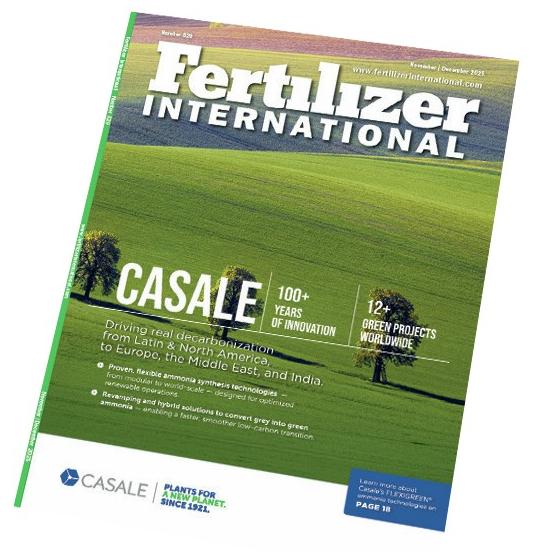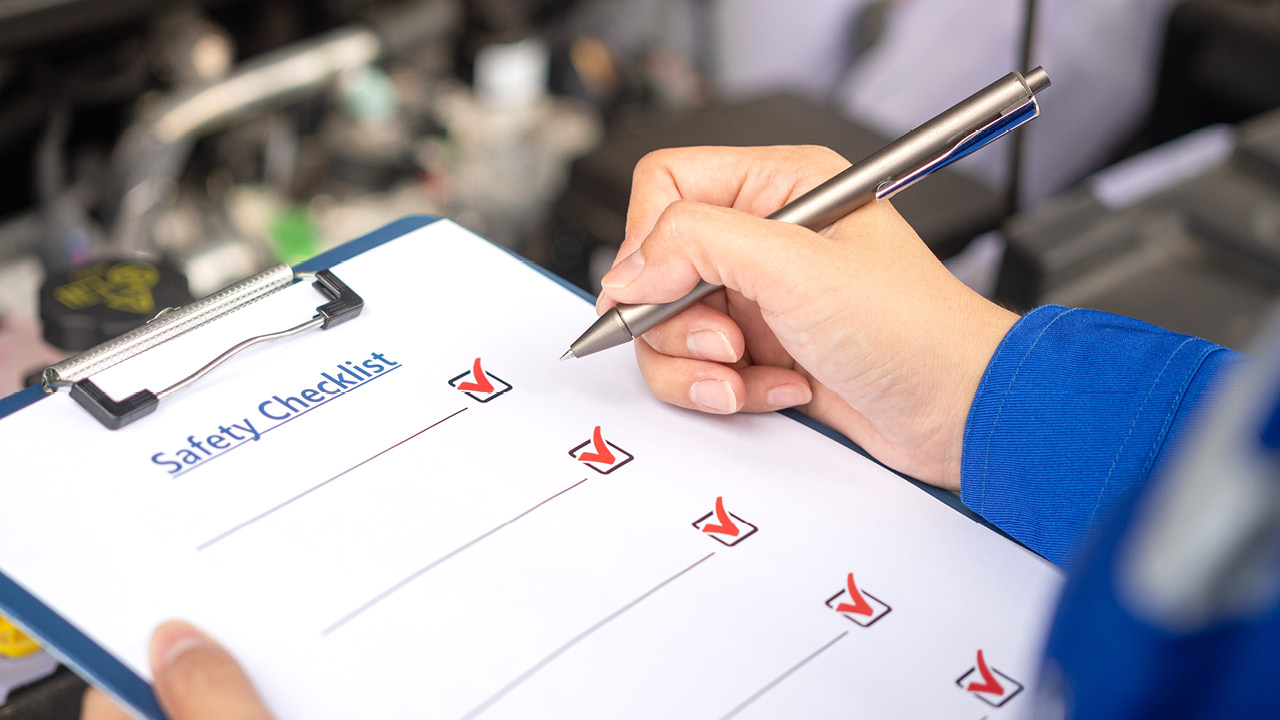Fertilizer International 505 Nov-Dec 2021

30 November 2021
New policy approaches to food security and soil health
INDUSTRY VIEWPOINT
New policy approaches to food security and soil health
PhosAgro’s Evgeniya Mescherova and Boris Levin explain how new EU and Russian regulations, designed to safeguard the environment and human health, are improving global support for both soil health and food security.

Delivering food safely & sustainably
The much-needed shift to sustainable development is not proceeding fast enough. That was the conclusion of the UN’s Global Chemicals Outlook II published in 2019. This stated that countries would not achieve the global goal to minimise the adverse impacts of chemicals and waste by 2020. The Outlook, originally mandated by the UN Environment Assembly in 2016, noted that workable solutions exist and called for more ambitious worldwide action by all stakeholders.
Until relatively recently, the role of mineral fertilizers in agriculture was relatively simple and straightforward. The main priority for crop production was to ensure a sufficient supply of food for the world’s growing population.
This remains a central objective – with risks to global food security actually increasing in 2020 under the shadow of the Covid19 pandemic. Indeed, the number of people going hungry in 2020 was 15 percent higher than in 2019, owing to the combined impact of Covid-19 and armed conflicts1 .
Nevertheless, equally pressing priorities have emerged and risen up the policy agenda. In particular, public health goals have shifted in recent years towards establishing effective functioning food systems able to deliver safe and nutritious foods in a sustainable way1 .
There has also been growing awareness that the different forms of contamination in agricultural production, including those arising from fertilizers and pesticides, can have serious environmental and health consequences. Crop additives and inputs that contain harmful contaminants can endanger human health by moving along the food chain, starting from soil and finally ending up in food products.
As the world learns how to live with Covid-19, the global food system is undergoing comprehensive renewal. This is having profound impacts on policies and institutions and prompting major social, business and technological changes in the agricultural sector2 .
Global instruments
Over the past few decades, the international community has launched initiatives and put in place a range of policy measures governing the use of pesticides and fertilizers. A greater awareness of the need for an adequate regulatory framework for soil and crop management has led to the introduction of a number of voluntary policy instruments. These include the International Code of Conduct on Pesticide Management, the International Code of Conduct for the Sustainable Use and Management of Fertilizers and the Codex Alimentarius.
These international instruments have an important role to play in global food security. They also provide a framework for addressing key aspects of agricultural sustainability, nutrient management and the safe use of agrochemicals.
The EU’s regulatory framework for food and agriculture
In recent times, EU policymakers have made major efforts to enact legislation that balances the need for increased food production with the need to conserve natural resources and protect human health. As a result, the European Commission has notably formulated several regulations that apply quality schemes to the EU agricultural and food sector.
The bloc’s flagship Green Deal policy, for example, sets ambitious zero pollution targets to ensure a sustainable EU by 2050. To achieve this, the Green Deal incorporates several subsidiary policy initiatives such as the Chemicals Strategy for Sustainability, the Zero Pollution Action Plan, the Farm to Fork Strategy and the EU Biodiversity Strategy for 2030. Furthermore, to address health issues related to pollution, the European Health Union has proposed further health measures such as the Beating Cancer Action Plan.
EU regulation of cadmium in foodstuffs
Speaking in support of Europe’s Beating Cancer Action Plan, Stella Kyriakides, the European Commissioner for Health and Food Safety, said: “We know that an unhealthy diet increases the risk of cancer. Today’s decision aims to put consumers first by making our food healthier and safer, as we have committed to doing in Europe’s Beating Cancer Plan.”
This speech was delivered in August 2021. This was the date when the European Commission set new maximum levels on two potentially carcinogenic food contaminants, cadmium and lead, in a range of food products as part of Regulation (EU) 2021/13233 . The Commission has applied these new stricter limits to different types of food products, ranging from beverages, such as wine, to foods including fruits, vegetables, cereals and oilseeds. This move has been recognised, at EU level and by member states, as a crucial step for safeguarding European agricultural sustainability and food security.
The Commission implemented these changes based on a European Food Safety Authority (EFSA) scientific report4 on dietary exposure to cadmium. This report found that, for EU adults, the average dietary exposure to cadmium slightly exceeds the permissible weekly intake, while cadmium exposure for both vegetarians and children could exceed the advised weekly intake by about two-fold.
Furthermore, a more recent study published this year by Public Health France5 states that cadmium levels in the French population increased in the period from 2006-2007 to 2014-2016 – and are higher than in other European countries or North America. One of the main sources of dietary cadmium was found to be breakfast cereals. Nearly half the French population show cadmium levels higher than that recommended by the French Agency for Food, Environmental and Occupation Health & Safety (ANSES). In an official 2019 study (ESTEBAN), ANSES recommended reducing cadmium exposure to the population, including that derived from mineral and organic phosphate fertilizers.
In 2014, the European Commission also introduced new restrictions on the levels of cadmium in baby foods and chocolate6 .
The EU’s Farm to Fork strategy
The EU’s Farm to Fork strategy, part of the Green Deal legislative package, aims to ensure the sustainable development of EU food systems. It makes an expicit link between sustainable food production processes and the protection of the environment and public health.
As part of the Farm to Fork strategy, the European Commission has set a target for reducing nutrients losses – especially for nitrogen and phosphorus – by at least 50 percent by 2030, while ensuring that there is no deterioration in soil fertility. The Strategy also includes a target to reduce fertilizer use by at least 20 percent by 2030.
In our view, to achieve the above goals, it would make sense to begin by restricting the use of fertilizers with high levels of hazardous contaminants, while simultaneously developing nutrient reduction plans. Such actions would help to reduce contaminants in the soil as well as improve the quality of plant-based food products.
EU’s Fertilising Products Regulation
Additionally, European legislators are currently establishing concentration limits for contaminants in mineral and organic fertilizers sold in the EU market. Their introduction is designed to further protect the health of food consumers. Studies have already shown that current levels of contamination in food systems constitute a risk – a risk that may increase if fertilizers containing high levels of toxic contaminants are used.
The EU’s Fertilising Products Regulation, adopted in June 2019, introduces common standards for the content of heavy metals in fertilizers for all member states. The Regulation will bring into force a harmonised EU-wide cadmium limit of 60 mg Cd/kg P2 O5 from the middle of next year.
Green certification for Russian fertilizer products
PhosAgro recently became the first Russian company to receive certification for its products under new federal legislation (see main article). Following an independent conformity assessment, Certificate No 1 for fertilizers with improved characteristics was awarded to the low-cadmium fertilizer products manufactured by this major incumbent Russian producer, currently celebrating its 20th anniversary year.
Also known as the green certificate, Certificate No 1 demonstrates that the fertilizers produced by PhosAgro – which are currently exported to over 100 countries around the world – are considered safer for the environment and can be used on any type of soil. It also shows that using PhosAgro fertilizers minimises the risk of contaminating soils and crops with toxic elements. Crops grown with these certified fertilizers should therefore also produce safer food products.
It is important to note that the standards introduced by the Russian Federation on the levels of heavy metals and toxic substances in fertilizers are several times stricter than EU standards being introduced next year: in fact, three times lower for cadmium and twice as low for arsenic. The maximum concentration of cadmium, chromium and other heavy allowed in mineral fertilizers in Russia is limited to 20 mg/kg of P2 O5 .
Green certification is a strategic development both for Russian agriculture and for those industries which supply this sector. That’s because improving the quality of crops and food produce also requires improvements in agricultural inputs, such as low-cadmium fertilizers and environmentally-safe crop protection products. Improving the characteristics of crops and food produced by conventional agriculture is also in harmony with (and complements) the organic food sector, which also aims to minimise the ecological footprint of its products.
In our view, the new legislative and regulatory conditions now created in Russia will accelerate the production of more environmentally-friendly fertilizers and, consequently, higher quality foodstuffs with improved characteristics.
Several member states, however, have already moved to put in place more stringent national limits on the cadmium content of phosphate fertilizers. In summer 2020, for example, the European Commission formally approved national provisions (derogations) limiting cadmium content in phosphate fertilizers for Hungary (20 mg Cd/kg P2 O5 )7 , Slovakia (20 mg Cd/kg P2 O5 )8 and Denmark (48 mg Cd/kg P2 O5 )9 . Furthermore, shortly before the Fertilising Products Regulation was published, Lithuania10 passed a law introducing a cadmium limit of 40 mg Cd/ kg P2 O5 , while Sweden (44 Cd/kg P2 O5 ) and Finland (22 mg Cd/kg P2 O5 ) retained their previous national limits11 .
These national derogations speak for themselves – the heavy metal content of fertilizers is clearly an issue of concern to both consumers and European lawmakers alike. Because of this, it is likely that reductions in fertilizer contaminants will be actively pursued for the foreseeable future. The expected launch soon of further European policy initiatives, such as the EU’s new soil strategy, nutrient management plan and regulation on a sustainable food system, are harbingers of tighter regulation in future. Indeed, EU member states appear to be generally supportive of new initiatives and policies designed to keep arable land and the food supply free of toxic contaminants.
EU green labelling of fertilizers
To inform consumers, the EU is proposing a voluntary labelling system for fertilizers with a cadmium content of less than 20 mg/kg P2 O5 . The label is likely to be green in colour and accompanied by appropriate wording (e.g., low-cadmium content) and a recognisable graphic. By providing additional information, the purpose of this ‘green’ label is to help consumers make more informed choices about fertilizers when they make their purchasing decisions. Under the guidelines, companies that produce or sell ‘ultra-low’ cadmium fertilizers will be permitted to use this green label. This will signal to consumers that the risk of cadmium accumulating in soils or entering the food chain is minimal.
The EU-sanctioned green label for low-cadmium fertilizers will offer farmers the choice to promote sustainable agriculture, in keeping with Green Deal objectives. In our view, EU farmers should also be incentivised through CAP eco-schemes to reduce the amount of cadmium entering soils via fertilizer application. This would be beneficial by promoting further significant reductions in heavy metals in soil.
Phosphate fertilizers are known to be among the main sources of heavy metals in soil. However, phosphate raw materials have a wide range of heavy metal contents and – consequently – different phosphorus fertilizers will affect the accumulation of heavy metal in soils to varying degrees.
Nevertheless, the intake of cadmium in soils should not exceed 2 g Cd/ha/year, according to a comprehensive environmental risk assessment conducted by ANSES, regardless of the cadmium source. Furthermore, ANSES recommended lowering the levels of cadmium in input sources to 20 mg Cd/kg P2 O5 when phosphate mineral fertilizers are used.
When combined together, all of the various EU policy measures – including voluntary green labelling, the ban on sales in member states of phosphate fertilizers containing over 60 mg of Cd/kg P2 O5 and national derogations establishing even lower cadmium limits – should promote soil safety and protect consumer health.
Green transition in Russia
Across the world, there is rising consumer demand for products and services which cause minimal harm to the environment throughout their life cycle. The Russian Federation is one country actively ‘greening’ various sectors of its economy – including food and agriculture and the industries which supply this sector.
In Russia, a new federal law (On agricultural products, raw materials and food with improved characteristics) will come into force on the first of March next year. This law will create a single regulatory framework governing the safety and quality of agricultural and related products. It introduces improved characteristics, certification and conformity criteria for these products, alongside higher raw materials quality requirements.
The improved characteristics certificate (see box) is being introduced in Russia as an indicator of quality and safety. It covers agricultural produce, raw materials and food, and implements environmental standards (both national and interstate) in force in the Russian Federation.
The product certification introduced under this law is expected to raise consumer demand in Russia for ‘green’ products which comply with the new regulations. Certification requires compliance with a range of quality criteria covering the whole supply chain, including production, storage, transportation and sales.
The law also introduces maximum permissible limits for toxic substances in fertilizers. These limits, by making fertilizers more environmentally-friendly, will help reduce the amounts of pollutants introduced into the food system via crop nutrients. Making this a specific requirement in federal law will ensure that agricultural products are safer – for both the Russian population and for consumers of exported Russian products globally.
Conclusion
Crucially, about 95 percent of the food we eat comes from the soil12 . Consequently, as the medium in which nearly all crops grow, soils are recognised as the foundation of global agriculture and the world food system. To preserve the quality of food products and the health of the population, our first priority is therefore to safeguard and take care of crop conditions and the cleanliness of arable land. In this article, we provide real world examples of how regulatory action in the EU and Russia, by prioritising the environment and human health, is improving global support for both soil health and food security for future generations.
Authors
Evgeniya Mescherova is a leading expert on international projects at PJCS PhosAgro. Boris Levin is deputy chief of staff for the company’s CEO.
References






